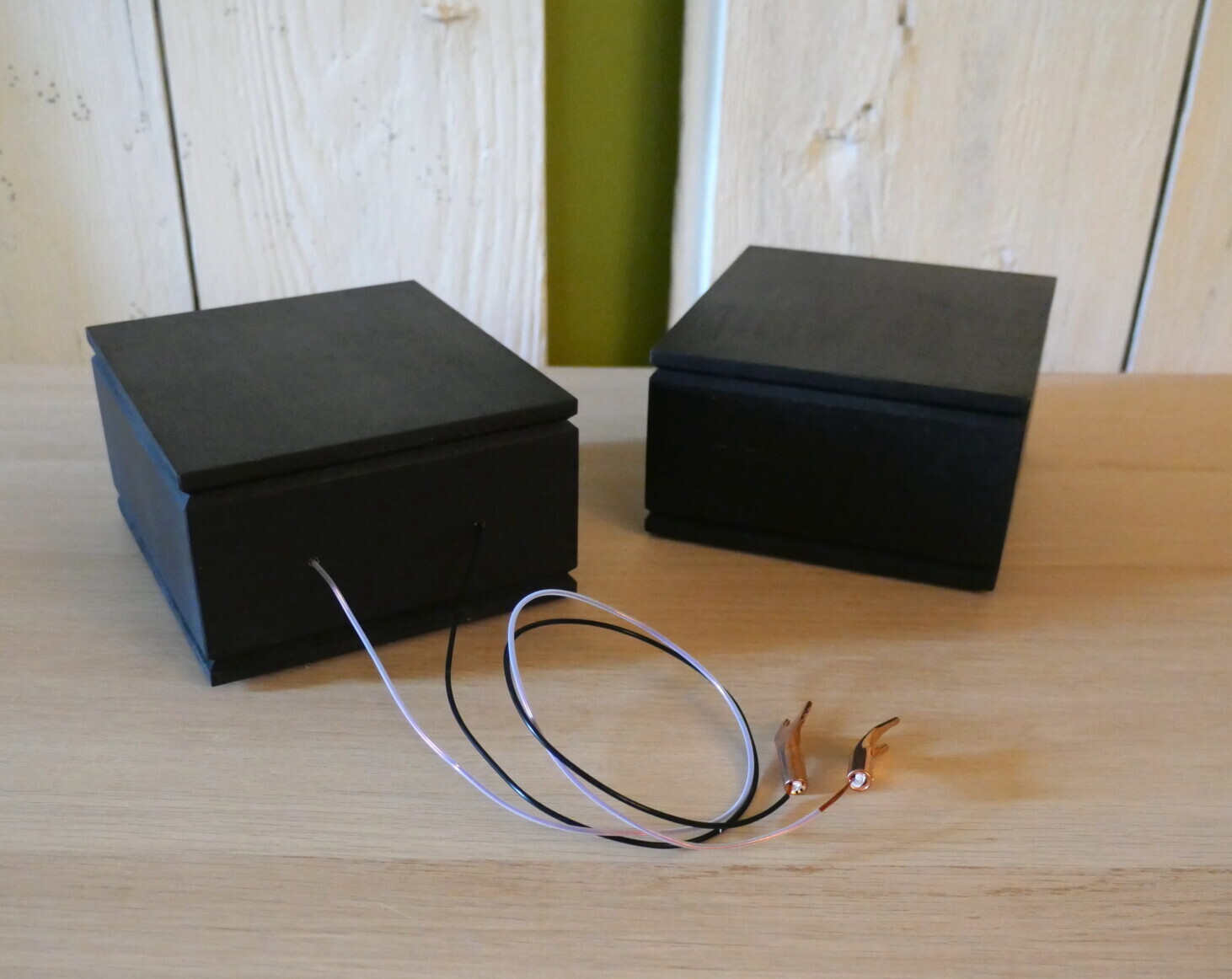I love the little Haydns. I’d take them over any floorstander short of the Living Voice R25 or Vienna’s own Beethoven Baby Grand – both more than twice the price of the Haydn. I love them for their effortless sense of scale and the way they let music breathe: I love them for their rich vibrant colours and musical textures; And I love the way they disappear on the end of a system. But I love them a whole lot more with the NoiseTraps attached to their terminals! Bigger, bolder, more articulate, crisper and cleaner, the performance becomes more vivid the playing more emphatic. It’s down to a drop in noise floor and a pretty dramatic increase in transparency. The likes of the Göbel might make it easy to hear the NoiseTraps’ contribution, but the tiny cabinet and prodigious musical energy and bandwidth (for one so small) generated by the Haydn gives them more to work with.

Listen to Neil Young’s live album, Massey Hall 1971 (Reprise PS 03) and as nice as the sound is with the Haydn’s au naturelle, it’s simply better with the NoiseTraps attached. Young’s voice and diction is more natural, much more solid and immediate. There’s more air and a much greater sense of space. The guitar is more vivid and vibrant, with a real sense of attack and decay. Notes are more pitch definite, accent and emphasis in the playing is much more obvious. It’s like stepping inside the room and someone turning on the lights! Suddenly, you are in the same space as the performer – and he’s there, performing for you. That’s how great a shift you get in terms of presence, immediacy and expressive connection.
Playing Víkingur Ólafsson’s album, From Afar (DGG UCCG 45060/1) the grand piano is bigger, weightier and more complex, with layers of harmonics, which is impressive enough – especially when compared to the upright used on disc 2. But the real difference comes in the spacing of the notes, both in terms of time and pitch. The playing is much more deliberate, with better lefthand/righthand balance and a real sense of the piano’s action. Where the orchestration on the Lisa Batiashvili album Echoes Of Time (DGG UCCG 1524) sounds a little leaden and ponderous without the NoiseTraps, attach them and it becomes brooding and powerful, while the solo violin takes on an intensity founded in heightened body and focus. Not the greatest recording, the BlackHoles disinter the remarkable performance that’s buried beneath the murk. And so it goes – until pretty soon the ABA comparisons fall by the wayside and I just listen to and marvel at the musical performances coming out of those tiny speakers. If the Vienna Acoustics Haydns are good out of the box, adding the NoiseTraps makes them very good indeed.
What these little black boxes from SoundStrip seem to accomplish is to control or direct spurious energy into the service of the system and, more importantly, the music. Whether they’re stripping away unwanted energy that’s getting in the way, or redeploying it to greater purpose remains to be seen: Logic says the former but it really does sound like the latter. It’s a tremendously impressive result from such an anonymous and nondescript item. This is a much more significant lift in performance than that offered by the Vertex Picos, but let’s not overlook a few of the lessons that early product can teach.

